•.
Canon
EF 50 1.4 USM
Review of a Classic
Peter
Kun Frary
.
•
For much of the second half of the 20th century, the 50mm prime was sold as the de facto kit lens for millions of SLRs. I used a Nikkor 50 1.8 exclusively on my Nikon FM for many years. Thus, I learned to "see" images with the coverage and perspective of a 50mm lens. In other words, the pre-visualized image in my head matched what I saw in viewfinder. Even after I "upgraded" to a Nikkor 35-70mm zoom, I found myself constantly at 50mm! So, for me, and I suspect many others raised with film SLRs, there is a natural ease to shooting with a 50mm lens.
Falls of Clyde Reflection | EOS 5D and EF 50 1.4 USM
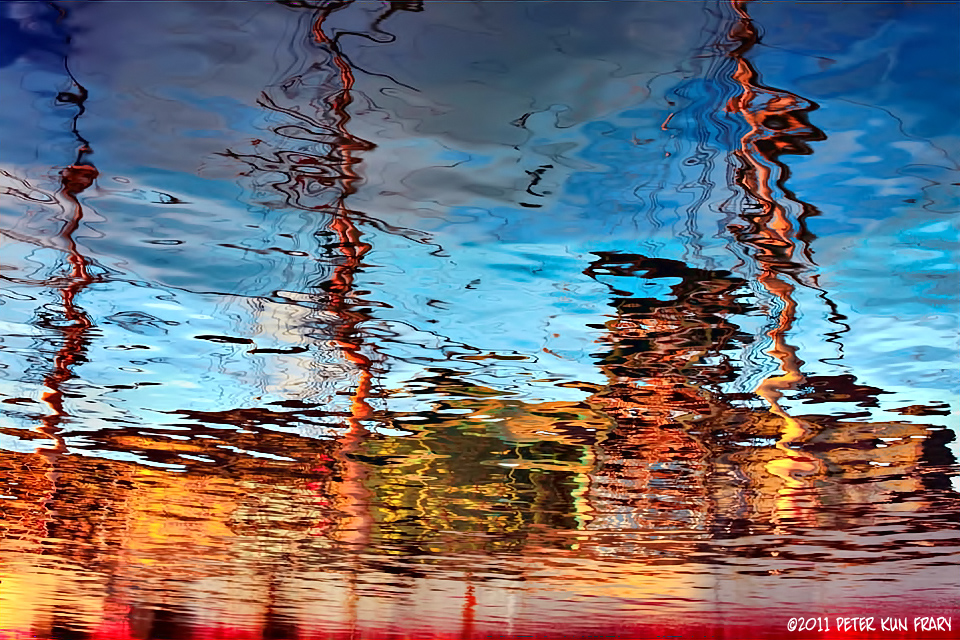
This review consists of my opinions and observations as a hobbyist. No scientific measurements, MFT charts or pixel peeking comparisons will be found here.
 Compatibility Compatibility
The EF 50 1.4 STM lens works on all Canon EOS DSLR cameras, both full frame and APS-C (1.6X), such as the EOS 6D and Rebel SL3. It will also work on EOS R and M series mirrorless cameras with a mount adapter. It does not fit non-Canon cameras such as Pentax, Nikon, Fuji, etc.
Why Use a 50mm Prime?
If you're into available light photography, the 50mm prime lens should be on your short list. Why? Even the slowest examples weigh in at F 1.8 to 2.0, fast enough to shoot without flash in candle light. The fast aperture also makes for bright viewfinders, another desirable feature for dim conditions. Fast optics also tend to have smooth bokeh. The soft whirl of an out of focus background really makes your subject pop. Finally, a compelling reason to use a 50mm lens is size. Most 50mm primes are small and light.
Ambush | Elan 7E and EF 50 1.4 USM | Provia 100F
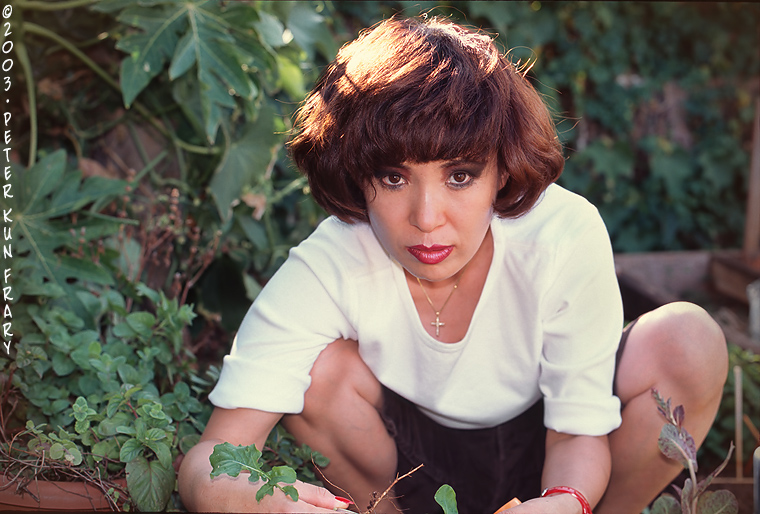
 Construction Construction
Construction quality and appearance of the EF 50 1.4 USM are similar to the original EF 50 1.8 (MK I): plastic barrel, metal mount and distance window. The EF 50 1.4 USM is slightly heavier (290g) but endowed with a wider manual focus ring and silk-screened gold ring. It also boasts an eight-blade diaphragm for elegant bokeh, 58 mm filter threads for easy sharing of filters and close focusing ability (45 cm). The front element does not rotate, but the lens changes in length when focusing (front element extension).
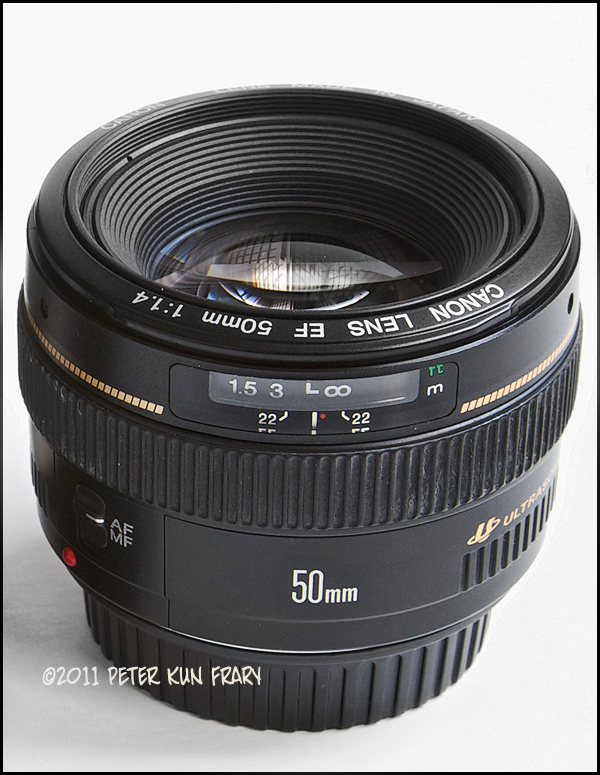
The micro-USM motor is nearly silent during AF and allows FT-M, i.e., manual focus without flipping the AF/MF switch. The focusing ring is large and gripable, but the mechanism feels coarse. Unlike most AF lenses, you must turn the focusing ring considerably to focus from 0.45 meters to infinity, so precise manual focusing is easy, but not as silky or smooth as a dedicated manual focus lens.
Elan 7N and EF 50 1.4 USM | The Elan 7 was Canon's last film SLR design.
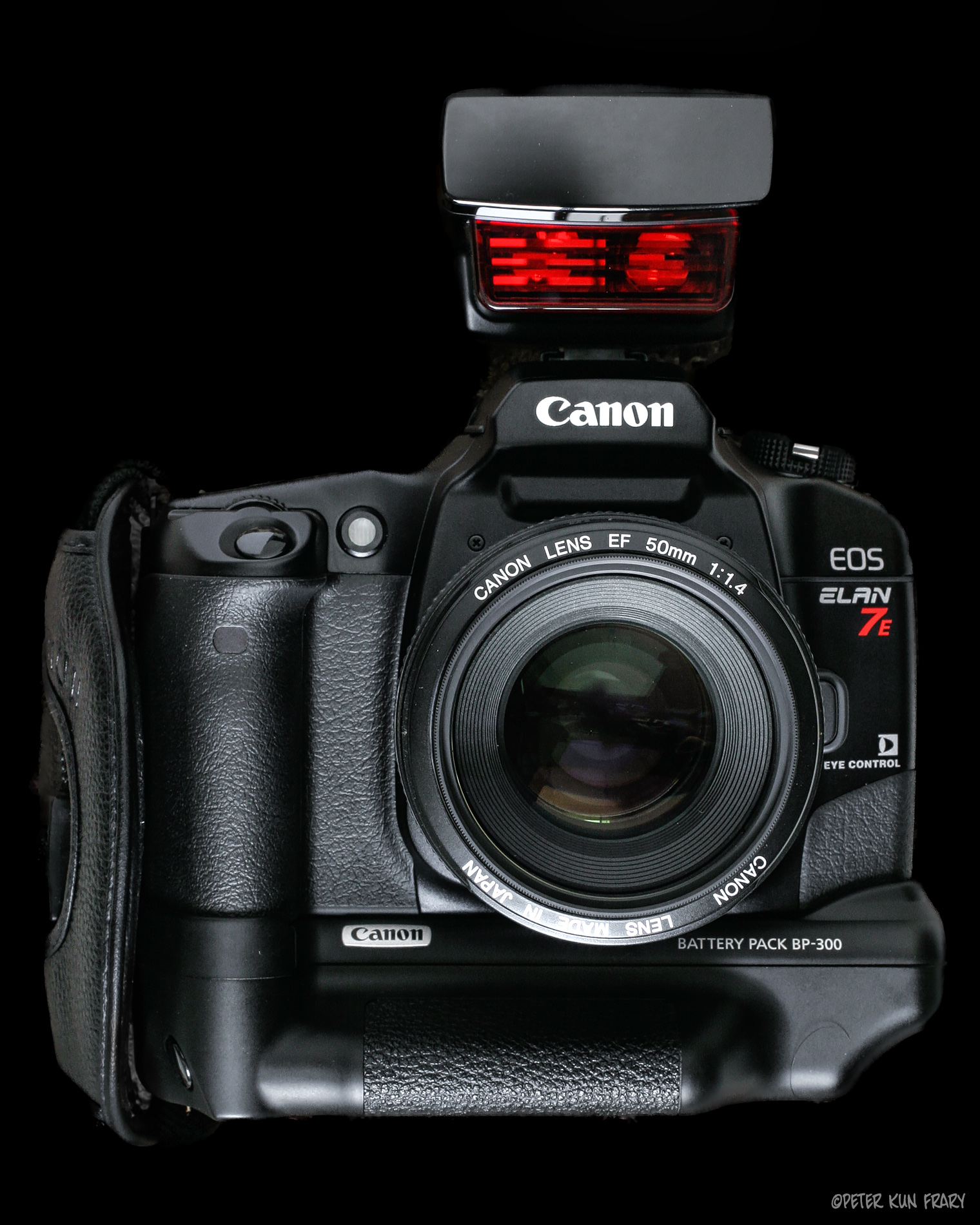
 Focus Focus
AF is peppy but about the same speed as the EF 50 1.8 and a little slower than the EF 50 1.2L USM. Although I had no problems with AF reliability during the 7 years I owned this lens, I've heard complaints about its less than robust AF mechanism.
Agashi | Elan 7E, EF 50 1.4 USM, Fill-in Flash (-1.5) and Portra 160VR

Oddly, low light AF is not as sure-footed as my slower zooms such as the EF 24-105 4L IS USM. Perhaps the extremely shallow depth of field due to the F1.4 aperture yields less contrast than slower optics?
It has DOF markings but, unfortunately, Canon dropped the ball and only provided DOF markings for F22. Why bother?
 Image Quality Image Quality
This seven-element design is fairly flare resistant and distortion free compared to zoom lenses. Moreover, it is extremely sharp by F4.0. I found my copy a little soft between F1.8 and F2.8 and terrible wide open. Some folks claim their 50 1.4 is critically sharp by F2.8, so this lens may be subject to considerable sample variation. Besides soft performance wide open, my sample suffered pronounced coma from F1.8 to F4: streetlights and stars had strange comet-like tails. Coma wasn't 100% gone until F5.6, so not a good lens for astronomy or cityscapes.
I should point out that I mainly used the EF 50 1.4 USM on an Elan 7E and EOS 5D, cameras lacking AFMA, i.e., the focus calibration feature of later cameras. I was able to improve sharpness slightly from F 1.8 to 2.8 on my EOS 5D MKII by calibrating focus, albeit AFMA didn't help wide open performance or coma much.
The Gardener | Canon A2 and EF 50 1.4 USM | Provia 100F
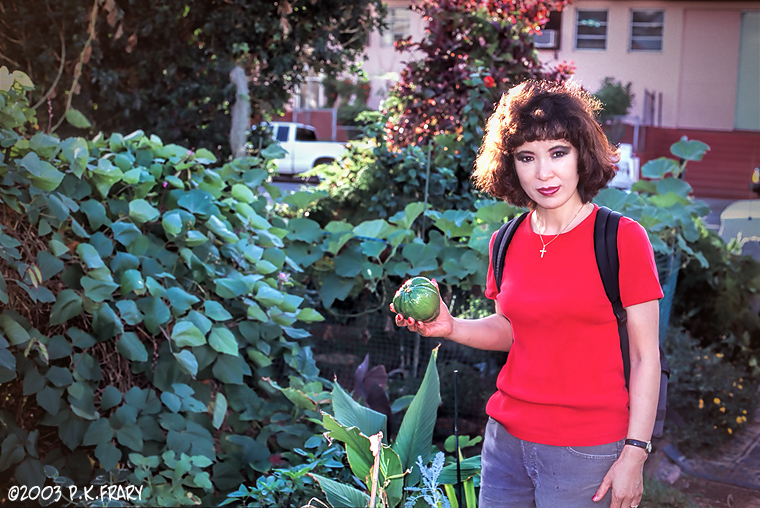
It focuses all the way down to 18 inches, but shows noticeable barrel distortion in close-up work (this is why they make macro lenses, see the EF 50 2.5 Compact Macro). It uses the ES-71II hood, a twist-on design with anti-reflection flocking on the interior. The size and flocking afford the maximum amount of protection possible without vignetting. I recommend use of the hood to protect the front element and to prevent flare.
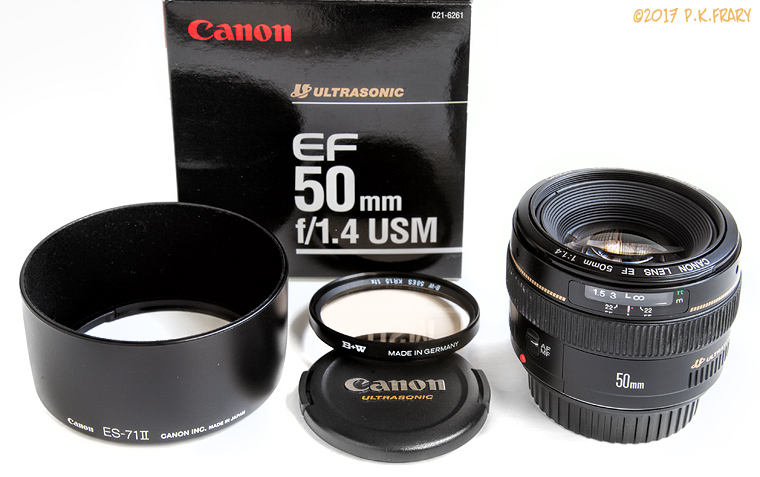
 Final Blurb Final Blurb
Despite a few zits, I like using the EF 50 1.4 USM as a walk-around lens. The petite form factor, light weight, bright viewfinder and natural perspective make it easy to carry and shoot with. However, at $399, this lens is a little pricey considering the lower price of the EF 40 2.8 STM and EF 50 1.8 STM. However, if you can get a good copy, it's the bee's knees for available shooters, bright viewfinder lovers and bokeh strokers.
Finally, please help support this website by purchasing this lens at Amazon.
 
06/17/2017 | Revised 10/19/2023

©Copyright 2017-24 by Peter Kun Frary | All Rights Reserved
|